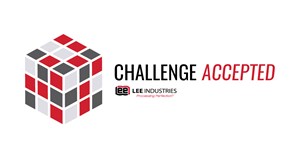Sign up to be notified of our new blog posts.
Challenge Accepted: Increasing Evaporation Rates to Accelerate Production
Posted on February 19, 2020

Summary:
When a major jam and jelly manufacturer needed to replace outdated vacuum pans, they faced a critical challenge: how to dramatically increase evaporation rates without compromising throughput. With only two larger vacuum pans planned to replace eight smaller ones, the math didn’t look favorable, until Lee’s engineers introduced an innovative heat transfer solution that surpassed expectations.
Challenge Accepted: Solving Unique Customer Problems
Challenge Accepted is a periodic review of how we solved a unique customer challenge.
Lee processing vessels are known around the world for expert craftsmanship and incredibly durable performance. In fact, we frequently hear about Lee vessels still operating after more than 50 years of continuous service.
While we take pride in the quality of our products, some of our most valuable work happens long before the first piece of stainless steel is cut. It starts in the engineering room, where innovation and experience come together to solve real-world problems
The Challenge: Efficiency vs. Evaporation Rate
A well-known jam and jelly manufacturer came to us with a production bottleneck. They needed to replace eight small vacuum pans and wondered if they could scale down to just two larger pans to save on labor and improve efficiency.
But there was a catch:
- Their target production rate was 18,000 lbs. of finished product per hour.
- To reach this goal with just two vessels, they would need an evaporation rate of 80 lbs. per minute, well beyond what conventional jacketed vessels could handle.
Their concern was that too much water would need to be evaporated in each batch, potentially slowing down throughput instead of accelerating it.
The Solution: Expanding the Heat Transfer Area
Lee’s engineering team dove into calculations to determine how to maximize evaporation without compromising product quality. The answer: increase the heat transfer area inside each vessel.
What Lee Engineered:
- Designed three booster coils inside each vacuum pan
- Increased total heat transfer area from 45 sq. ft. to 155 sq. ft. per vessel
- Achieved evaporation rates of 90 lbs./minute (and 100 lbs./minute in live production)
This new configuration allowed the customer to:
- Replace eight 200-gallon pans with just two 600-gallon pans
- Meet and exceed their production rate targets
- Add future scalability and capacity
The Results: Higher Efficiency, Greater Output
The two new 600-gallon vacuum pans, each outfitted with three booster coils, are now in full production.
- Evaporation rates have reached 100 lbs. per minute, exceeding initial estimates.
- The customer has achieved significant labor savings and production efficiency.
- Their new system offers room to scale even further as demand grows.
While these vessels were built to Lee’s renowned quality standards, their success is rooted in what happened before the build, in the engineering phase, where every challenge was tackled head-on.
Key Takeaways
- Problem: Scaling from 8 small to 2 large vacuum pans required extremely high evaporation rates.
- Goal: Achieve 80+ lbs./minute evaporation rate to maintain 18,000 lbs./hour throughput.
- Solution: Integrated three booster coils per pan, tripling heat transfer surface area.
- Result: Exceeded production goals with 100 lbs./minute evaporation and future scalability.
- Lesson: The right engineering solution can unlock massive gains in operational efficiency.
Have an engineering challenge you need to solve for your processing operation? Tell us about it and we’ll get to work to find a solution that works for your operation.
Last Updated: 10/17/2025
Comments
Add Your Own Comment